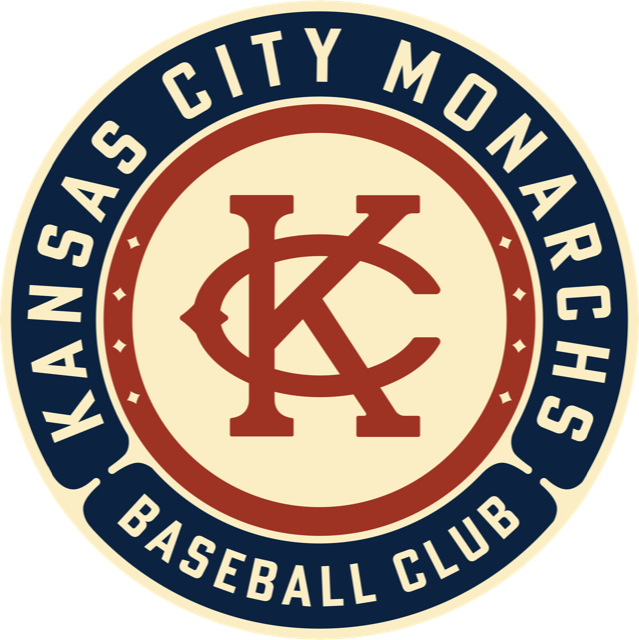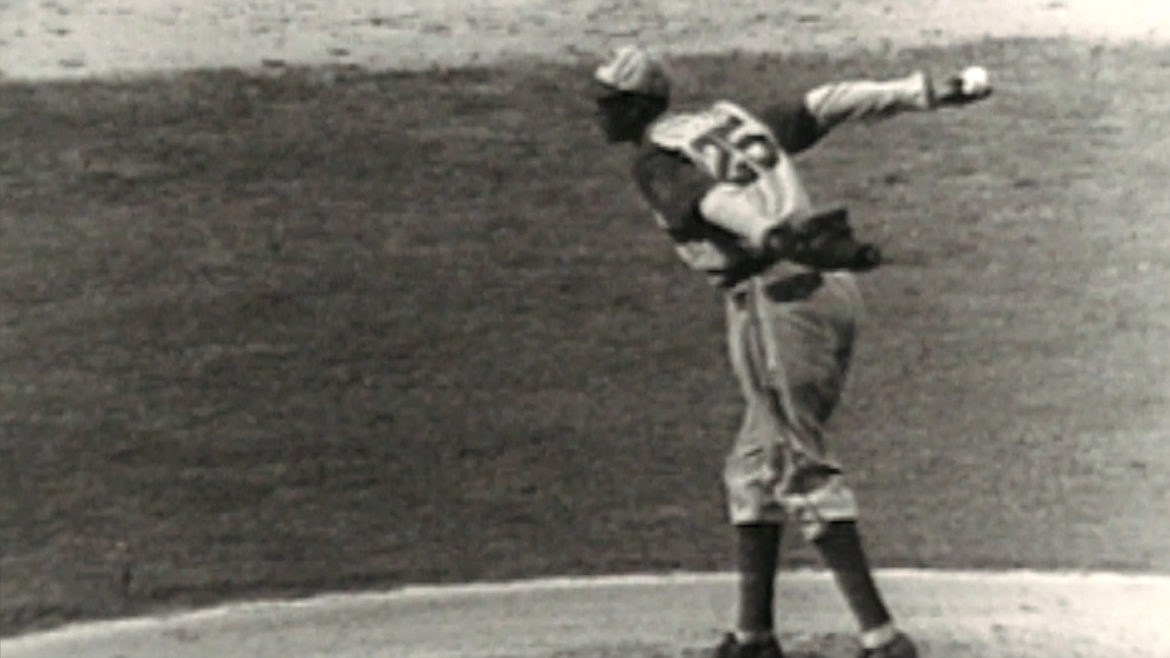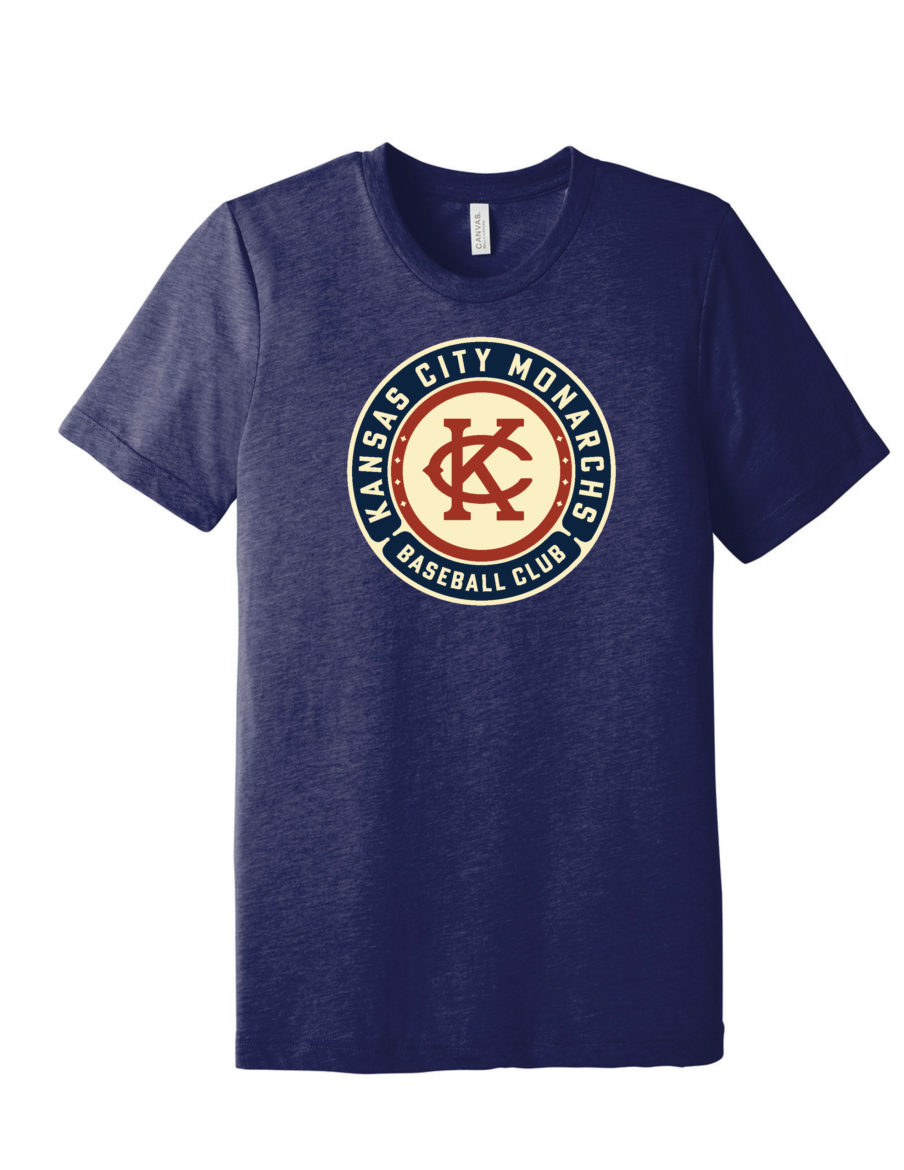Published 3 hours ago
Above image credit: In the first six games of a barnstorming tour featuring the 1934 Kansas City Monarchs (pictured here) and a team of “All-Stars” playing with St. Louis Cardinals pitcher Dizzy Dean, the All-Stars won three times and the Monarchs won twice, with one game ending in a tie. (Courtesy | Missouri Valley Special Collections/Kansas City Public Library)This spring it will be possible to buy a ticket and witness something not seen in more than 50 years – the Kansas City Monarchs playing a baseball game.
That hasn’t happened since 1965.
By then the Negro Leagues had shut down, with many of its younger stars playing prominent roles on the rosters of Major League Baseball.
Today the legacy of the Monarchs remains on vivid display at the Negro Leagues Baseball Museum. The exhibits and artifacts curated there honor the Black baseball played for decades in a parallel confederation of leagues and alliances operating across 20th century segregated America.

That was then.
But, now, the Monarchs are back.
Last month, Bob Kendrick, museum president, and Mark Brandmeyer, a Kansas City entrepreneur, announced the rebranding of the former Kansas City T-Bones minor league team as the Monarchs.
“It’s about relevancy,” Kendrick said recently.
“It’s important for a cultural institution to always find ways to make history relevant. This partnership gives us an opportunity to take a historic brand and essentially bring it back to life.
“When those young athletes put on that Monarchs uniform – the spirit of Buck O’Neil, Satchel Paige, Bullet Rogan, Jose Mendez, Hilton Smith – they all will come back to life.”
The museum controls the use of the Monarchs name, Kendrick said. And in sanctioning the new licensing agreement, the museum is agreeing to take its heirloom asset – the Monarchs name and legacy – out from behind glass and put it back into everyday use.
Accordingly, both Kendrick and Brandmeyer say, proper care will be taken.
Both confirm that the former T-Bones Stadium in Kansas City, Kansas – to be renamed the Field of Legends – will feature a satellite museum devoted to the historical Monarchs.
Educational displays that will accompany the contemporary Monarchs as it travels also will detail the original team’s achievements on and off the field.
“This is an incredible opportunity to tell all the great stories from the past,” said Brandmeyer, the new Monarchs’ owner.
“Our intent is to honor the past but also blaze a trail for the future.”
While several Kansas City area Negro Leagues researchers and historians support the rebranding, they also wonder if the new Monarchs’ management will be appropriately mindful of the team’s place in modern American history.
Sometimes the unique contributions of Black Americans have been erased over time, said Delia Gillis, history professor at the University of Central Missouri in Warrensburg and director of the school’s Center for Africana Studies.
“What I would not want to see happen is 50 years later a newspaper reporter or historian would be researching this and have no clue that the Kansas City Monarchs had been this historic and amazing team,” Gillis said.
“The whole purpose of having the traveling exhibit and the educational pieces is so the team’s legacy won’t be forgotten,” she added.
“So kudos to Bob Kendrick for making that happen, and let’s make sure it stays in place.”

Social Change Agents
Historians like Gillis and others long have been documenting how the Negro Leagues operated, its teams becoming intrinsic parts of their communities’ social and economic cultures.
Professional Black baseball teams have been identified as far back as the late 19th century.
But the Feb. 13, 1920 organization of the Negro National League at Kansas City’s Paseo YMCA offered stability to such teams. Over time the quality of the Negro Leagues play, along with the ability and charisma of its athletes, attracted a larger and increasingly diverse audience leading up to the 1947 integration of Major League Baseball by Jackie Robinson.
In this way Black baseball arguably played just as significant a role in achieving a more equal America as did formal actions of the federal government. That included President Harry Truman’s 1948 executive order initiating the integration of the United States armed forces, and the unanimous 1954 Supreme Court decision in Brown v. Topeka Board of Education, which ruled segregated public schools unconstitutional.
“We had to overturn unjust laws, so there was always a legal and political aspect,” Gillis said.
“But social and cultural aspects also played a role.”
Larry Lester, Kansas City Negro Leagues scholar and founder of NoirTech Research, Inc., which provides sports scholarship to various clients, has no doubt about the impact of Black baseball on modern American society.

“Before President Truman’s Executive Order 9981 desegregated the military,” Lester said, “before Brown vs. Topeka Board of Education in 1954, before Rosa Parks sat down on that Montgomery bus in 1955 and justice stood up, before Daisy Bates and the Little Rock Nine integrated Central High School in Arkansas in 1957, before the March on Washington in 1963 and before the Civil Rights Act of 1964 and the Voting Rights Act of 1965 inspired by the march in Selma, Alabama – before all of this, the social change agents in this country were sports figures.”
None other than Martin Luther King, Jr. knew this, Lester added.
About a month before his 1968 assassination, King visited former Negro Leagues and Major League Baseball pitcher Don Newcombe in California.
Newcombe, who died in 2019, recalled in a 2009 interview how King – exhausted by a speaking tour – sought out his company while in California.
During the visit King thanked Newcombe for the role that he and other Black baseball stars such as Jackie Robinson, Larry Doby and Roy Campanella had played in demonstrating the justice of equal access to America’s elite playing fields and – by extension – the country’s schools, voting booths and boardrooms.
“Don, you’ll never know how easy you and Jackie and Doby and Campy made it for me to do my job by what you did on the baseball field,” Newcombe said King told him.
“Many Black players paved the way without protest or anger,” Lester said.
“They had as much impact as any lawyers, politicians or civil rights activists could generate during Jim Crow.”
Dizzy Dean: ‘Freedom Fighter’
Just how that process worked in 1934 is detailed in the 2019 book, “The Dizzy and Daffy Dean Barnstorming Tour: Race, Media and America’s National Pastime,” by Kansas City author Phil S. Dixon.
Dixon describes how that year St. Louis Cardinals pitchers Jay and Paul Dean – “Dizzy” and “Daffy” – led a team of professional “All-Stars” across America immediately following that year’s World Series.
Both had agreed to the lucrative tour to capitalize on their post-series celebrity. Each of the Dean brothers had won two games in the Cardinals’ series triumph over the Detroit Tigers. It had been the first World Series to be broadcast over national radio.
Dizzy Dean, in particular, had become a media sensation. During the 1934 season he won 30 games. Further, Dean’s often grammar-free braggadocio made lively newspaper copy.
Still another novelty was night baseball. Several of the 1934 tour’s games were played under the lights – an innovation introduced in 1930 by Monarchs owner J.L. Wilkinson. The first Major League Baseball night game wouldn’t be played until 1935.
And there was something else.
Dean’s All Stars – rookies and veterans of white segregated professional baseball – would be competing against Black teams. During the 14-day tour, the All-Stars played against four established Black teams, the Monarchs among them.
“By playing African American teams, the social drama was increased,” Dixon wrote.
Meanwhile, Dixon added, many of those who would pay to see these games would be white.
Because of the Deans’ stature, some of those customers may have assumed the Deans’ team would be superior to the Monarchs.

Yet, in the six games between the two teams, the Dean All-Stars won three times, the Monarchs won twice, with the sixth game ending in a tie.
In his book, Dixon referred to Dizzy Dean as a “freedom fighter” for daring to test himself against elite Black athletes in Jim Crow America. By making that choice, Dixon said, Dean chose to share the media spotlight following him as he was followed by sportswriters representing the country’s mainstream daily newspapers.
For many, it was their first look at Black baseball
“The Monarchs were not receiving that kind of attention,” Dixon said.
The paying public, meanwhile, had no reason not to believe what they just saw. Ultimately, the Deans’ two-week 1934 tour attracted about 125,000 fans across 11 states.
In contrast, according to Dixon, the Cardinals had drawn a home attendance of 334,863 during the entire 1934 season.
Seen from today’s perspective, the 1947 integration of Major League Baseball by Jackie Robinson – himself a Monarch in 1945 – is difficult to imagine without years of conscious efforts at “brand building” by Black baseball entrepreneurs, said Lester, the author of “Baseball’s First Colored World Series: The 1924 Meeting of the Hilldale Giants and the Kansas City Monarchs,” first published in 2006.
The 1924 series games were scheduled not just in Kansas City and Philadelphia – host city of the Hilldale Athletic Club, located in Darby, Pennsylvania – but also Baltimore and Chicago.
“Despite opposition from the Monarchs and owner J.L. Wilkinson, the last three games of the series were played in Chicago to appease dictatorial league president Andrew “Rube” Foster’s desire to increase his share of the gate,” Lester said.
The lack of white fans in the stands hurt the game receipts for the 1924 series, Lester added.
But Dizzy Dean drew big crowds to his 1934 barnstorming tour, which began in Oklahoma City one day after the final game of the 1934 World Series in Detroit. By the 1940s more white fans would be turning out for Negro Leagues games, Lester said.
“The presence of white fans in the 1940s would increase significantly due to the popularity of the (Black baseball) East-West All-Star games, which started in 1933, eventually drawing more than 50,000 in 1941 and 1943, more than the white major league All-Star games,” Lester said.
Social change was not among the principal motivations of those who organized the Dean’s 1934 tour – among them Monarchs owner Wilkinson, Monarchs co-owner Tom Baird, and Ray L. Doan, a baseball promoter.
“It was money,” Dixon said.
Still, during the Great Depression and leading up to World War II – in a steady and cumulative way – white and Black athletes, when competing against one another, presented in plain sight a reasonable facsimile of a more equal America.
“Sometimes I think – in our zeal to label the importance of somebody, even Jackie Robinson – we tend to minimize all the tremendous contributions that were being made simultaneously to make this change,” Dixon said.
“The 1934 tour barnstorming tour, with Dizzy Dean – I consider that tour the perfect storm because of all the things it did achieve.”
Monarchs: Back in the Marketplace
Sioux Falls, Fargo, Milwaukee, Winnipeg.
If and when the Monarchs tour the American Association of Professional Baseball circuit this season, they will play the Canaries, Redhawks, Milkmen and Goldeyes.
They also will provide those teams’ fan bases access to the historical Monarchs legacy. It’s part of the licensing agreement between the museum and Brandmeyer’s MaxFun Entertainment LLC, detailed during a press conference last month.
“You can imagine people were asking in early interviews, ‘Was it easy to turn over the Monarchs name?’ Of course not. That’s our baby,‘’ Kendrick said then.
“But after sitting down with Mark Brandmeyer and his team, it was very clear to us that our baby was going to be well taken care of.”
In October 2019, United Government of Wyandotte County/Kansas City, Kansas, officials had padlocked ballpark gates at Village West, the dining and entertainment district, after the T-Bones’ previous owners had failed to meet utility and rent payments.
Days later, government officials approved the team’s acquisition by Brandmeyer.
When he first considered acquiring the T-Bones, Brandmeyer said recently, he didn’t consider it in his “business wheelhouse.” His business background includes medical devices and prefabricated construction.
Yet he couldn’t ignore the T-Bones financial issues, he said.
“They had been locked out of their stadium,” Brandmeyer said. ”(United Government/Kansas City, Kan. Mayor) David Alvey asked me to take another hard look at it.”
Part of Brandmeyer’s motivation was his recollection of the 1985 move to Sacramento by the Kansas City Kings. He remembers assuming that a new National Basketball Association franchise soon would replace the Kings.
That never happened.
“Teams like this add to the fabric of the city and I thought it would be such a shame for Kansas City to lose such a great asset,” he said.
Brandmeyer brought the rebranding idea to the Negro Leagues Baseball Museum last fall.
“The Monarchs was such a great name to be able to adopt,” he said. “This gives the museum an active brand out in the marketplace. We are thrilled and couldn’t be more proud.”
For the museum, Kendrick said, the partnership presents the museum a new source of revenue.
“This is a long-term deal and it includes support from the ball club as well as significant royalty opportunities associated with ticket sales, merchandise purchases, and food and beverage purchases,” he said.
“The more people go through the turnstiles, the more people buy stuff, the more people eat and drink – it all helps support the Negro Leagues Baseball Museum. So this is a tremendous partnership, and we all have a vested interest in the success of the ballclub.”

Appropriate corporate stewardship of the Monarchs name was key to the deal, Kendrick said.
“It’s important that the fan base understands that the athletes wearing those uniforms do not necessarily ‘become’ the Kansas City Monarchs but are paying homage to the Monarchs’ legacy,” he said.
Monarchs-branded merchandise already can be found on the team’s website at monarchsbaseball.com.
The American Association, which Brandmeyer describes as a
“partner league” of Major League Baseball, released its 2021 schedule on Monday. Twelve teams will play a 100-game schedule starting in mid-May, the association announced. Visitors to the Monarchs website can find details about various season ticket packages.
According to the American Association announcement, league officials are anticipating reduced stadium capacities due to the COVID-19 pandemic.
During Monarchs home games, there likely will be “Monarchs Minutes” that will summarize various moments in Monarchs history, he said.
The stadium experience may also include opportunities to ask fans to consider the career numbers generated by Negro Leagues legends such as Satchel Paige and Josh Gibson, and how those statistics fit into the known baseball universe.
In December, Major League Baseball Commissioner Rob Manfred announced that Negro Leagues statistics generated from 1920 through 1948 will be considered “major league.”
Educational displays accompanying the team to Winnipeg or Sioux Falls, meanwhile, will alert fans to the museum in Kansas City.

“Ultimately it will drive those fans to experience what we have here at our headquarters at historic 18th and Vine in Kansas City,” Kendrick said. “You never know where your next supporter is going to come from.”
Rube Foster, who in 1920 founded the Negro National League, would be pleased, Delia Gillis believes.
“I am positive and optimistic about the new branding,” she said
“The rebranding of the Kansas City T-Bones as the Monarchs is a marvelous marketing idea, if promoted historically,” added Lester.
Dixon, meanwhile, said he will wait and see.
“It keeps the Monarchs name alive,” Dixon said. “But, to me, if you have a predominantly white team, it kind of defeats the purpose.”
Dixon said he was reserving judgment “on any team called the Monarchs that may not have significant Black representation in the players and the front office.”
Brandmeyer said he and his colleagues would be mindful of that as they work to attract the most talented athletes available to them.
“We always will have a diverse roster,” Brandmeyer said. “That said, we will also play to win.”
Flatland contributor Brian Burnes is a Kansas City area writer.
Related Stories
"again" - Google News
February 09, 2021 at 07:00PM
https://ift.tt/2MShDnP
Kansas City Monarchs Making History... Again - Flatland
"again" - Google News
https://ift.tt/2YsuQr6
https://ift.tt/2KUD1V2
Bagikan Berita Ini














0 Response to "Kansas City Monarchs Making History... Again - Flatland"
Post a Comment